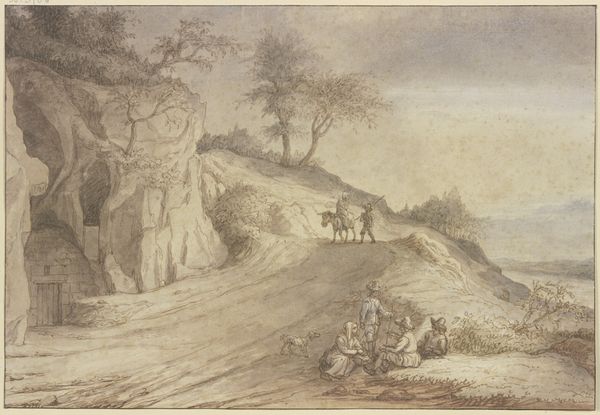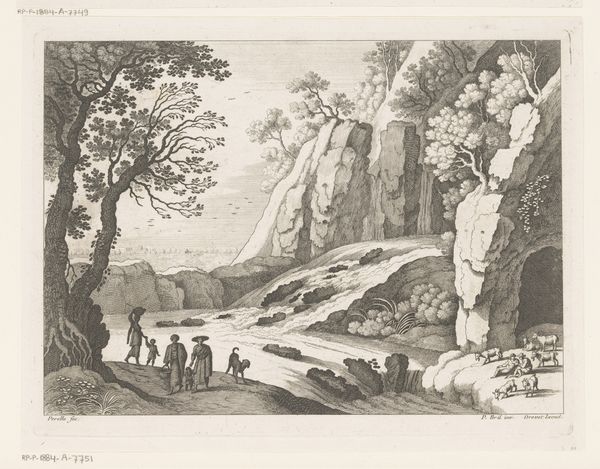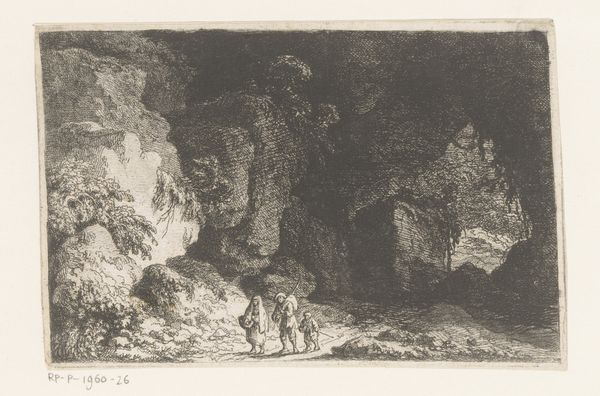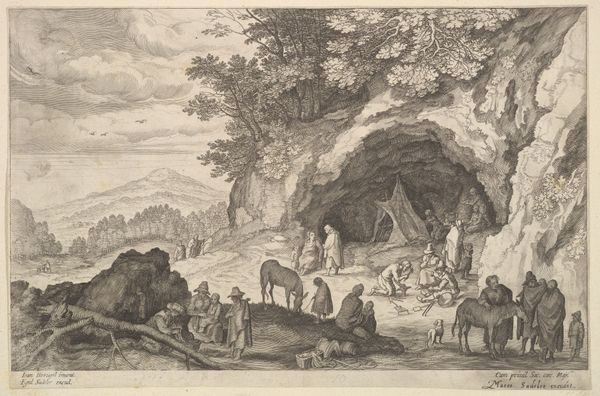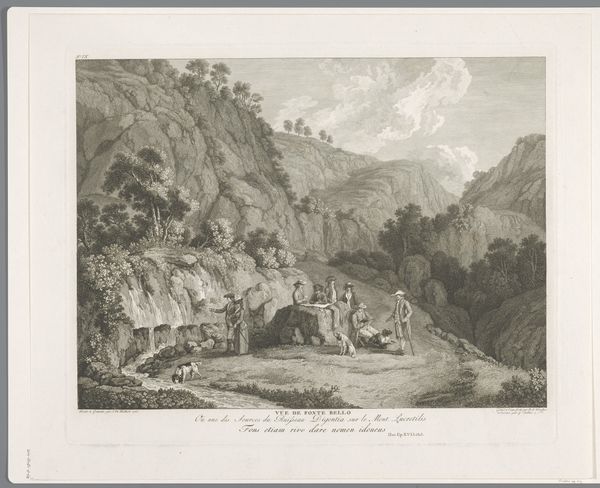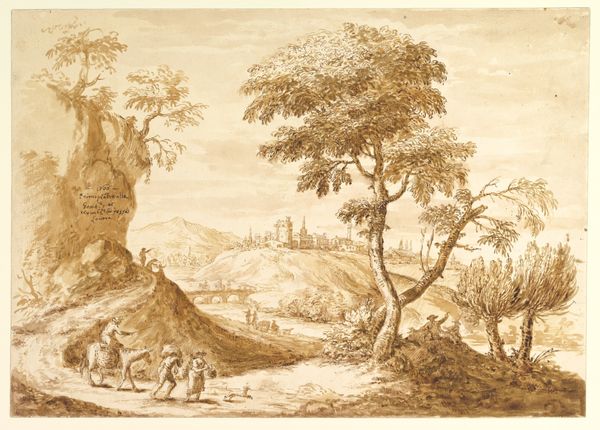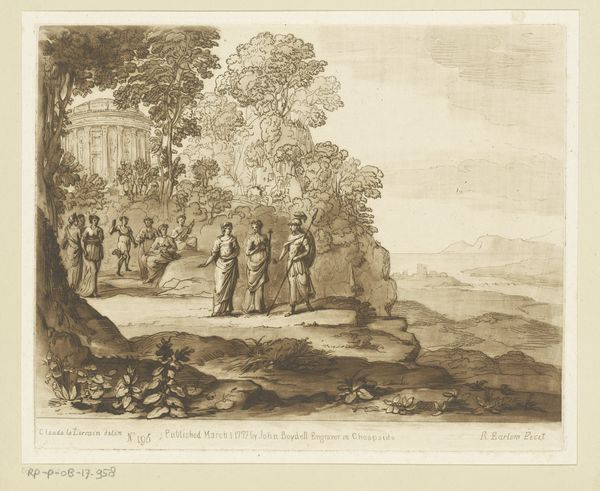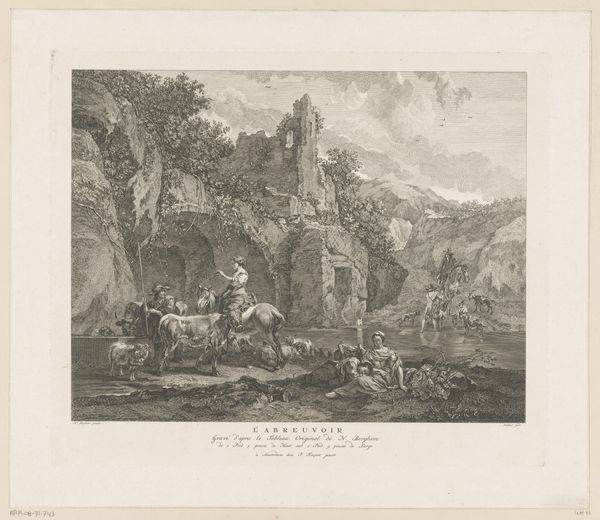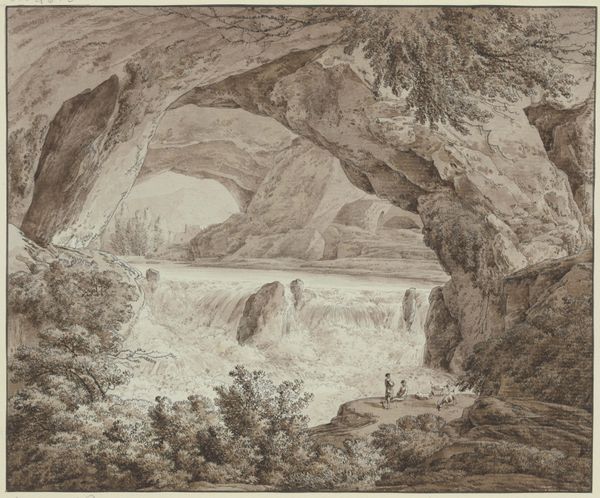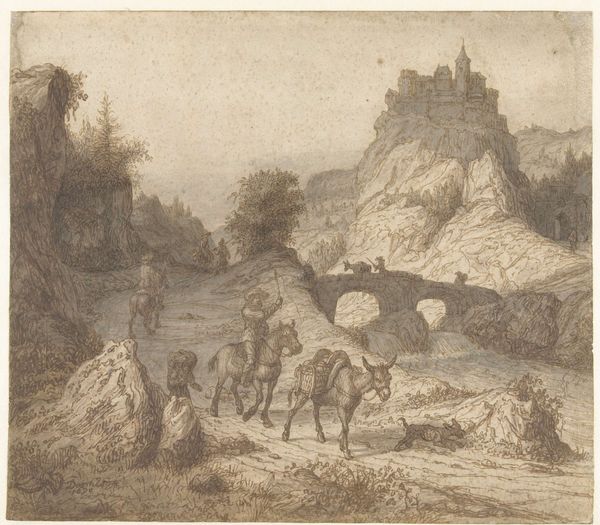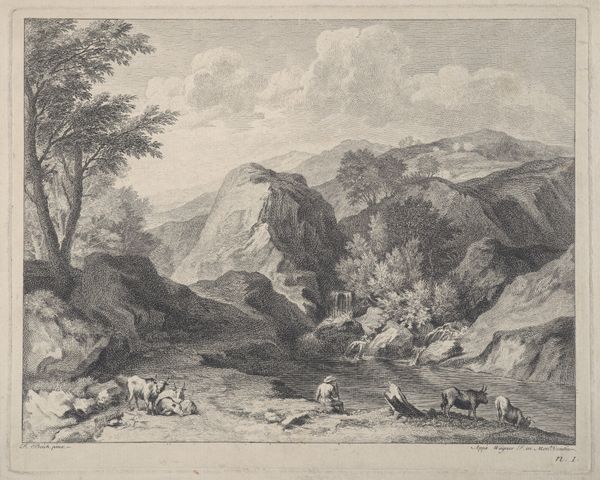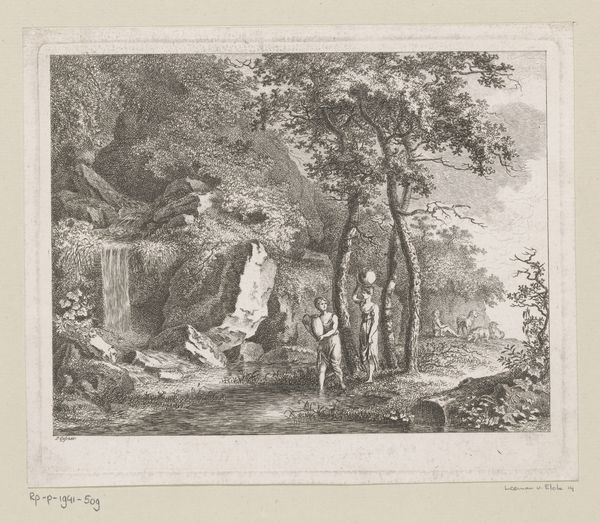
Travelers at the Rock Arch in the Limestone Mountains of the River Elbe 1804
0:00
0:00
drawing, print, ink
#
drawing
# print
#
landscape
#
charcoal drawing
#
figuration
#
ink
#
romanticism
Dimensions: sheet: 13 1/4 x 15 15/16 in. (33.7 x 40.5 cm)
Copyright: Public Domain
Curator: What strikes me first is the almost theatrical nature of the scene. Editor: Indeed. We're looking at "Travelers at the Rock Arch in the Limestone Mountains of the River Elbe" by Johann Moritz Gottfried Jentzsch, dating back to 1804. It's rendered in ink and charcoal. Curator: It evokes a very distinct mood, a sense of wonder tinged with slight apprehension. There’s this feeling of journeying into the unknown, facilitated by this architectural structure in nature that hints at transition, literally and symbolically. Editor: Precisely! Consider the context in which Jentzsch created this. Romanticism was in full swing. We observe this in Jentzsch's magnification of nature and its sublimity. It highlights how landscape became imbued with social, cultural, and even political meanings at the time. Thinkers were examining our role within our environment, especially through paintings, prints, and drawings such as these. Curator: These travelers, poised at the mouth of the arch, present something further still. I think, they serve as surrogates for us. Our perspectives are unified with them and we become aware of both scale and impermanence. Note the light flooding from the background, what does this source from light coming through, tell of us of its affect? Editor: Good observation. One cannot help but be awed by nature and how artists portrayed those connections in their landscapes, also reflecting contemporary socio-political moods. This wasn't merely an innocent landscape; these settings invited people to explore themselves. Curator: There is indeed a tension in the depiction; a collective invitation, so to speak. Editor: Looking at Jentzsch's composition as a whole, what stands out is the calculated approach towards representing something so colossal and irregular as a rock formation, particularly how the travellers are arranged and spaced at intervals. This really conveys the role art can play as an invitation for individual exploration of self in relation to a cultural perception of landscape. Curator: A very convincing point; Jentzsch invites the viewer on an introspective exploration beyond his landscapes’ representational facade. Editor: Indeed, and how! That intersection is so important in how we interpret art, I think. Curator: It enriches the way we look at landscape depictions; they mirror something far deeper than what is visually on display.
Comments
No comments
Be the first to comment and join the conversation on the ultimate creative platform.
